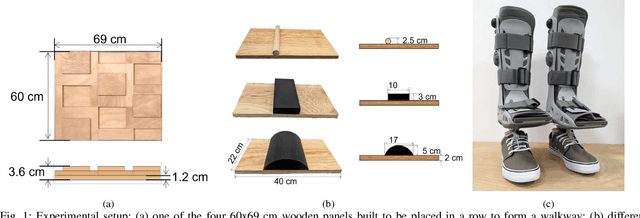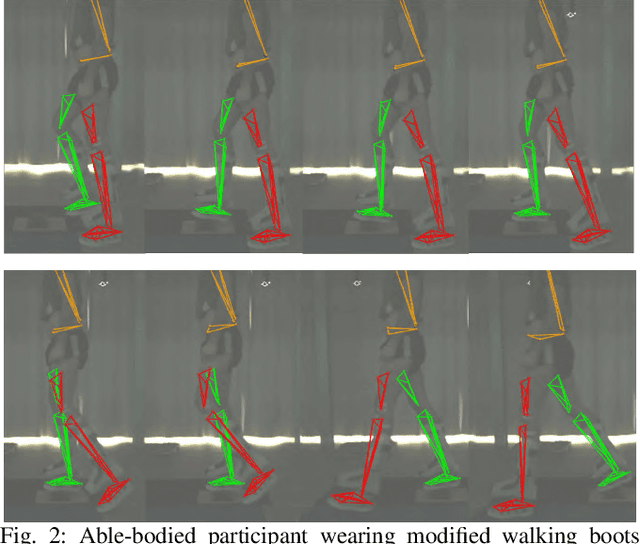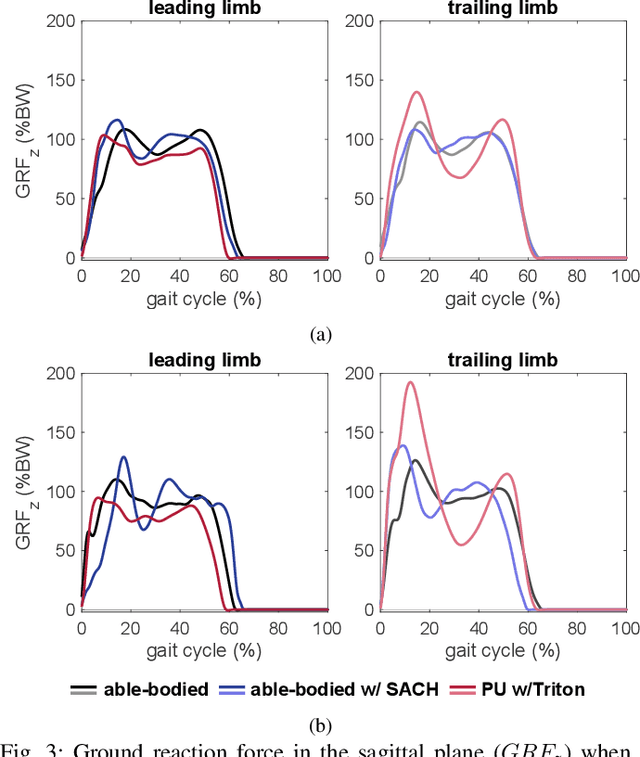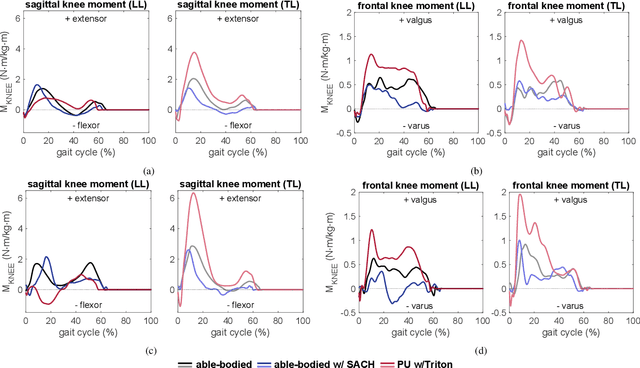An Experimental Setup to Test Obstacle-dealing Capabilities of Prosthetic Feet
Paper and Code
Dec 18, 2023



Small obstacles on the ground often lead to a fall when caught with commercial prosthetic feet. Despite some recently developed feet can actively control the ankle angle, for instance over slopes, their flat and rigid sole remains a cause of instability on uneven grounds. Soft robotic feet were recently proposed to tackle that issue; however, they lack consistent experimental validation. Therefore, this paper describes the experimental setup realized to test soft and rigid prosthetic feet with lower-limb prosthetic users. It includes a wooden walkway and differently shaped obstacles. It was preliminary validated with an able-bodied subject, the same subject walking on commercial prostheses through modified walking boots, and with a prosthetic user. They performed walking firstly on even ground, and secondly on even ground stepping on one of the obstacles. Results in terms of vertical ground reaction force and knee moments in both the sagittal and frontal planes show how the poor performance of commonly used prostheses is exacerbated in case of obstacles. The prosthetic user, indeed, noticeably relies on the sound leg to compensate for the stiff and unstable interaction of the prosthetic limb with the obstacle. Therefore, since the limitations of non-adaptive prosthetic feet in obstacle-dealing emerge from the experiments, as expected, this study justifies the use of the setup for investigating the performance of soft feet on uneven grounds and obstacle negotiation.
 Add to Chrome
Add to Chrome Add to Firefox
Add to Firefox Add to Edge
Add to Edge